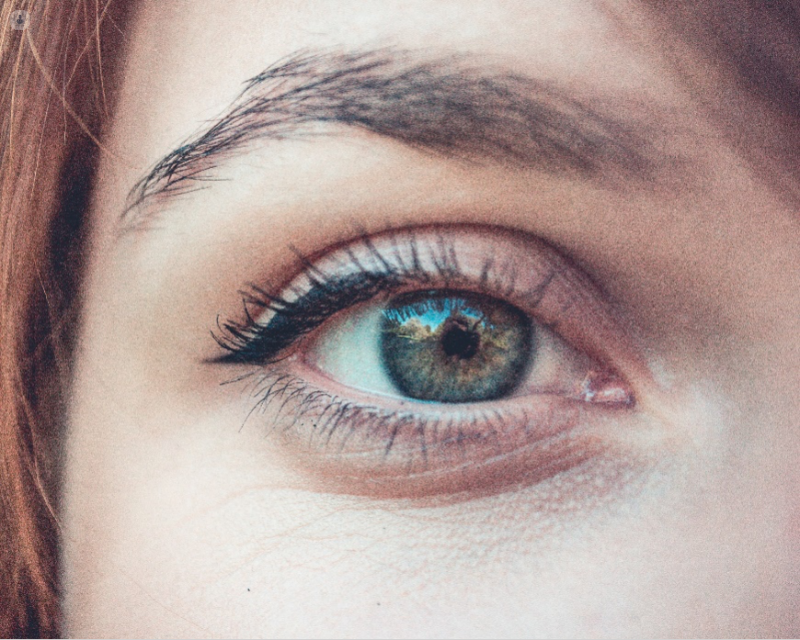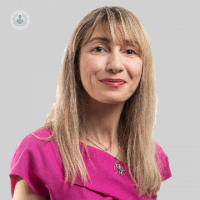Retinal vein occlusion: everything you need to know
Autore:Retinal vein occlusion is a condition that isn’t uncommon in people under the age of 60, though it’s more prevalent in older people.

We recently spoke with Dr Gabriella De Salvo, internationally-recognised consultant ophthalmologist, to find out the answers to some of your FAQs regarding this condition. Read on to find out exactly what retinal vein occlusion is, how dangerous it is, what the symptoms are, how it’s diagnosed and treated.
What is retinal vein occlusion?
Retinal vein occlusion (RVO) is a temporary obstruction of one of the retinal veins, resulting in engorgement and dilation of the blood vessels involved. RVO causes spread of retinal haemorrhages, possible retinal damage (ischaemia) and macular oedema (fluid accumulation), affecting the vision.
RVO can affect the main retinal vein. In this case, it is called central retinal vein occlusion (CRVO) or, more frequently, one of its branches, therefore called branch retinal vein occlusion (BRVO). RVOs represent the second most common vascular cause in the world, causing decreased vision. The risk for the other eye to be affected ranges between 5 - 10%.
What are the early and late-stage symptoms of retinal occlusion?
Patients affected by RVO may experience abrupt, painless loss of vision, sometimes preceded by temporary loss of vision of short duration called amaurosis fugax. Accumulation of fluid at the centre of the retina is called macular oedema and is responsible for the decrease in vision. Macular oedema can be associated with both CRVO and BRVO. In the case of ischaemic CRVO also the peripheral vision will be affected, while in BRVO, usually only one quadrant of the visual field will be affected, causing blurred vision in that particular field of vision.
What are the risk factors for retinal vein occlusion?
Risk factors for RVO can be local or systemic. Among the first ones, open-angle glaucoma is the most common. Common systemic risk factors include arterial hypertension, dyslipidaemia, diabetes mellitus, thrombophilia. RVO can be caused by other systemic inflammatory diseases, such as lupus erythematosus, Behçet's disease and sarcoidosis, and can be associated with various haematologic conditions such as leukaemia and lymphoma. Smoking and obesity are also risk factors.
Is retinal vein occlusion an emergency?
Patients with RVO need to seek medical advice as soon as possible to rule out any possible underlying disease causing the RVO. They also need to be seen within a few weeks by an ophthalmologist in order to get the diagnosis, being treated if necessary and avoid possible complications, such as neovascular glaucoma (new blood vessels associated with increased intraocular pressure) or bleeding inside the eye (vitreous haemorrhage).
How is retinal vein occlusion diagnosed?
RVO is diagnosed at slit lamp examination by an ophthalmologist, visual acuity is measured, dilating drops then will help the doctor to examine the retina. A retina scan called optical coherence tomography (OCT) is done to evaluate the presence of fluid. In the case of ischaemia or possible complications, such as the formation of new blood vessels, a dye test called fluorescein angiography may be needed to study the retinal circulation and plan possible future interventions, such as injections inside the eye (intravitreal injections of anti-VEGF or steroid implant) and/or retinal laser.
What is the outlook for retinal vein occlusion patients?
Treatment with anti-VEGF and/or steroid eye implants has significantly improved the long-term prognosis of RVOs. Treatment improves both the vision and the macular oedema, except in those cases with ischaemic maculopathy. About 1/3 of CRVO cases develop retinal ischaemia. Therefore, it is fundamental to continue monitoring the retina and treat possible complications such as neovascular glaucoma.
If you believe you may have retinal vein occlusion, get in contact with a leading ophthalmologist such as Dr Gabriella De Salvo. Click here to visit her Top Doctors profile today.


